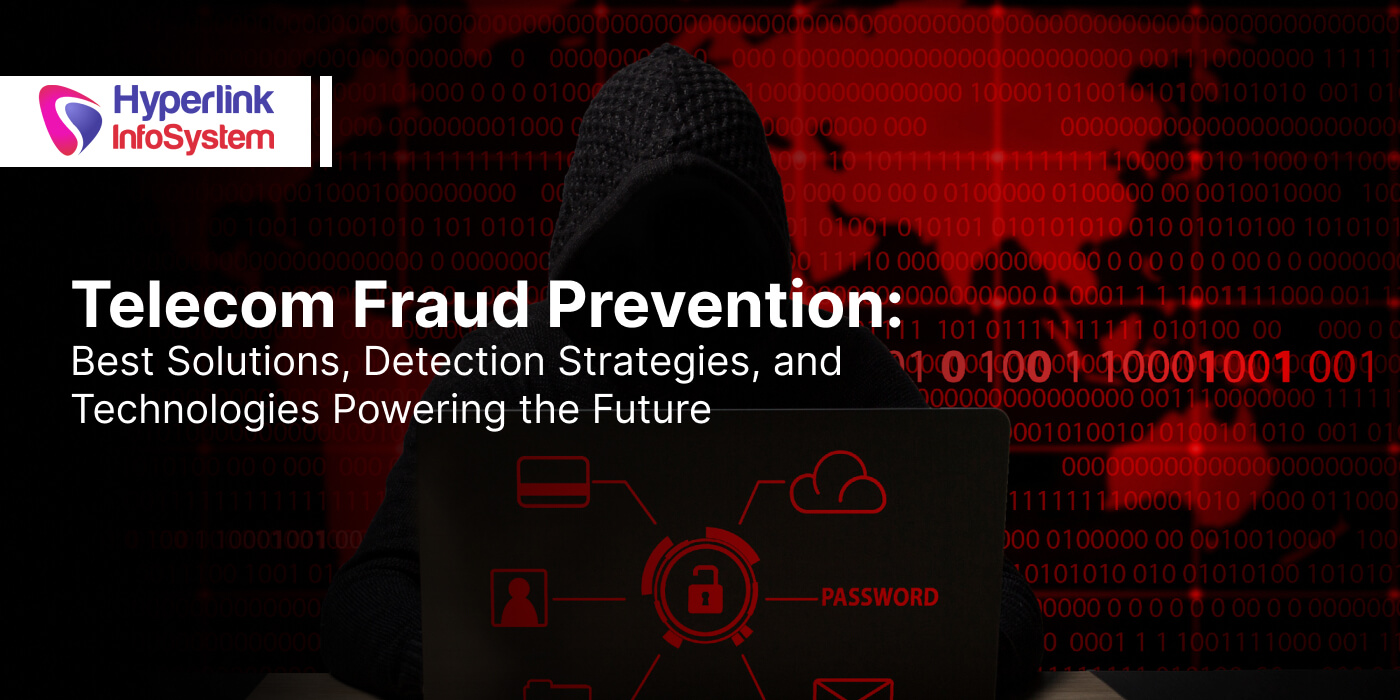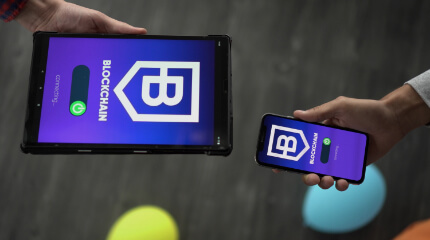Telecom Fraud Prevention Guide
Jul 2025

The telecom world has come a long way. From basic calls to lightning-fast 5G and cloud-powered everything, it’s now the backbone of how we live, work, and connect.
But with all this growth comes a serious problem—telecom fraud.
Fraudsters have gotten smarter. They are not just stealing call minutes or rerouting calls; they're stealing your data by getting into your system, draining your revenue, and putting your customer trust on the line.
And the worst part? People don't even realize it's happening until it's too late.
That’s why telecom fraud prevention isn’t something you add later—it needs to be baked in from the start.
Let's talk about what telecom fraud really looks like and how to prevent it with smart technologies.
What is Telecom Fraud? (And Why It’s Way More Common Than You Think)
When someone cheats the telecom system to make money or illegally gains access to services they shouldn't have. It is not only about spamming or prank calls, it's about scams that are well-planned for stealing data, money, and rerouting calls. They generally target phone networks, billing systems, and end users, too.
It’s sneaky. It’s smart. And it’s happening everywhere.
Types of Telecom Fraud You Should Know
There are many ways telecom fraud plays out, but here are a few of the most common and dangerous types:
- SIM Swap Fraud
A scammer tricks the mobile carrier into switching your number to their SIM. Once they control your phone number, they can access your accounts and even bypass two-factor authentication.
- Subscription Fraud
Someone signs up for services using fake or stolen identities, racks up charges, and disappears without paying.
- Wangiri Fraud
(Japanese for “one ring and cut”)—Your phone rings once and disconnects. If you call back, you’re unknowingly dialing a premium-rate international number. Your bill goes up. The fraudster gets paid.
- IRSF (International Revenue Share Fraud)
Fraudsters artificially generate international calls to premium-rate numbers they control. It’s like getting paid for calls that should’ve never been made.
- PBX Hacking
Fraudsters get into a company's phone system (PBX) to make international calls, mostly on holidays, so that no one notices because such international calls are expensive.
- SIM Box Fraud
Calls meant for mobile networks are routed through cheaper, illegal channels using SIM boxes, causing revenue loss for operators.
A Problem That's Growing Fast
According to the Communications Fraud Control Association (CFCA),
The telecom industry loses over $39 billion to fraud every year across the globe. Yes, $39 billion!
And it's not like there's a full stop to it; such cases are only increasing with the smarter technology.
So, maybe you're taking telecom fraud lightly, but let me tell you, it is affecting your business and your customers more than you think.
Why Telecom Fraud Prevention Isn’t Optional Anymore
It's not like that telecom fraud is just a back-end issue; it is directly affecting the end users now, along with businesses and telecom companies. It affects revenue, security, and reliability. It compromises your customers' data and their privacy, and eventually, you'll lose your customers, too, for whom you've worked hard to build. It is not like a technical issue that you'll resolve in one go. It keeps harming you and costing you your money, data, and customers over and over again.
Here’s why putting strong fraud prevention in place is more than just smart—it’s essential:
1. It Saves You From Costly Surprises
Fraud doesn't happen to you the way you imagine, like in movies. Sometimes you won't even know that fraud happened to you. It happens very quietly, and then once you realise, everything adds up quickly in your mind, and boom, you have lost a lot by then.
2. It Keeps Your Operations Running Smoothly
Fraud causes more than just financial loss. It creates noise in your systems—messes with billing, disrupts internal workflows, and forces your team to deal with issues they shouldn’t be dealing with in the first place.
3. Your Reputation Depends on It
Customers expect secure, reliable service. If fraud hits and they’re affected, even once, it can take months (or years) to earn back their trust. And in a competitive market, losing trust often means losing the customer altogether.
4. There Are Rules—And They’re Getting Stricter
Telecom is a heavily regulated space. You need to be prepared for such scams by implementing stronger security standards. Otherwise, it can lead you to legal troubles, fines, or many such things.
5. It Protects the Experience You Promise
Whether it’s a dropped call, an inflated bill, or a security scare, fraud directly impacts how your customers experience your service. And when that experience breaks, so does loyalty.
If you're ignoring telecom fraud prevention, then let me tell you, you have to pay a higher price for the loss. It is better that you start looking for telecom fraud prevention methods to invest in.
Common Telecom Fraud Scenarios (and How They Actually Work)
Telecom fraud isn’t always loud and obvious. Most of the time, it slips in quietly, works in the background, and causes serious damage before anyone even notices. Here’s a look at some of the most common fraud tricks out there—and how they pull it off:
- SIM Box Fraud
Fraudsters use SIM boxes loaded with multiple low-cost SIM cards to reroute international calls as local ones. It’s clever—and illegal. While they save money, telecom providers lose revenue big time.
- PBX Hacking
They break into a company’s private phone system (PBX), usually on weekends or late nights, and make endless international calls on someone else’s dime. The business finds out when the phone bill arrives—and by then, it’s way too late.
- Call Forwarding Abuse
A fraudster sets up call forwarding on a victim’s phone number, then redirects calls to premium-rate numbers they control. victims’ unaware. The fraudster gets paid. Classic sneaky move.
- CLI Spoofing
This is when a caller fakes their number to appear as someone else, like a bank or a trusted contact. The goal? Trick the recipient into answering or sharing sensitive info. It’s phishing, but over the phone.
- Roaming Fraud
Here, scammers use stolen or fake identities to rack up international roaming charges, especially in places with delayed billing systems. By the time the carrier figures it out, the fraudster’s long gone.
- Toll-Free Traffic Pumping
Some shady operators artificially inflate call volumes to toll-free numbers they secretly profit from. The more calls they generate (often via bots), the more money they make, and guess who pays? The service provider.
These scams may look different on the surface, but they all lead to the same result: lost revenue, broken trust, and a massive cleanup job for businesses. That’s why catching them early and stopping them fast is everything.
The Best Solutions for Telecom Fraud Prevention
Telecom fraud is a serious problem. It’s not going away anytime soon, and it’s affecting companies at every level—from mobile network operators to small service providers. But the good news is, there are tools that actually work. Not just buzzwords, but practical technologies that help identify, stop, and reduce fraud in real-world situations.
Let’s go through what’s working today:
1. AI and Machine Learning
A lot of companies are using AI now, and for good reason. These systems can look at millions of calls, messages, and data points and pick up on what doesn’t seem normal. These abnormal activities can be a sudden spike in traffic from one number or any other unusual call routing. With time, ML makes the system better and smarter; it can catch things in the early phase only by identifying unusual patterns or activities. It is not perfect, but still it's effective and faster than other manual methods.
2. Blockchain
This is still fairly new in telecom, but it’s useful where you need strong tracking and verification. Once a call record or transaction is stored on a blockchain, it can't be changed. That means that if anyone tries to tamper with the data, you'll know it immediately. It adds a layer of transparency that’s hard to get with traditional systems. Some companies are also using smart contracts to control routing and billing automatically.
3. Voice Biometrics
You can fake a password, but it’s a lot harder to fake someone’s voice. That’s the idea behind voice biometrics. It’s being used more often in call centers or any telecom setup that deals with customer authentication. Instead of asking for a PIN or mother’s maiden name, the system recognizes the caller’s voice. It helps reduce identity fraud, especially for services that involve sensitive information or financial data.
4. Geolocation Tracking
This isn’t about spying—it’s about verifying. If a number registered in Delhi is suddenly making calls from Lagos, that should raise a flag. Geolocation tech compares the location of the device to the expected location, and if something’s off, it can trigger a block or alert. It’s very useful for catching SIM swap fraud or unusual roaming behavior.
5. Big Data and Analytics
Telecom networks generate a crazy amount of data every day. Data is not the problem, but how to use that data can be one! With proper analytics, companies can track calling patterns, find unusual spikes, and identify fraud trends early. This helps you react faster and also build long-term strategies to prevent repeat attacks.
6. Cloud-Based Tools
Cloud systems make it easier to keep fraud prevention systems updated and running across different teams or locations. You don’t have to install a bunch of software on every machine. Everything’s centralized. Most cloud platforms also offer real-time monitoring, so your team can see alerts as they happen, even remotely. For fast-moving threats, that makes a big difference.
These aren’t futuristic ideas. These are the tools companies are already using. The key is combining them properly, based on your business type and network structure. No single tool solves everything, but together, they make it a lot harder for fraud to slip through.
Why a Strong Telecom Fraud Management System Is a Total Game-Changer
Most companies don’t think about fraud until something goes wrong. And in telecom, when something goes wrong, it usually hits fast, spreads wide, and costs more than you expect. That’s why having a proper fraud management system in place isn’t just useful—it’s necessary.
Here’s what it really helps with:
1. You Find Problems Before They Spread
If fraud goes unnoticed for even a few hours, the damage can snowball. Having tools that track traffic and behavior in real time means you can spot and respond before it turns into a billing nightmare.
2. It Saves You Money
Fraud slowly eats away at revenue through fake traffic, bypassed routes, SIM abuse, all of it. A good system pays for itself by stopping that drain early.
3. It Reduces the Noise
Fraud leads to billing disputes, angry customers, and support overload. When you prevent it up front, your team spends less time firefighting and more time doing actual work.
4. It Keeps You Out of Trouble
There are regulations now that require fraud controls to be in place. If something serious happens and you can’t prove you had systems to catch it, it could land you in legal or compliance issues.
I guess we do not need fancy explanations here! Fraud exists; it is growing, and if you do not deal with it, then you are at risk, knowingly or unknowingly. Proper fraud prevention mechanisms present visibility, control, and peace of mind.
Challenges in Implementing Telecom Fraud Solutions (and How to Beat Them)
There can be many challenges coming your way implementing a telecom fraud solution. Here are some major ones to look out for:
1. Data Silos
When data lives in separate systems that don’t talk to each other, fraud detection becomes messy and incomplete. The fix? Use integrated platforms that centralize everything, so your fraud solution sees the full picture.
2. Legacy Systems
Older infrastructure often isn’t built for today’s smart fraud detection tools. But don’t worry—you don’t need to start from scratch. Many modern telecom fraud solutions are designed to integrate with legacy setups using APIs or cloud bridges.
3. Limited Resources
Not every team has a full-time fraud squad. But with AI-powered systems, you don’t need one. Smart automation can handle detection, alerting, and even blocking, freeing up your team to focus on strategy.
4. Scaling with Growth
What works for a small operation might break down under high call volumes. The answer? Cloud-based telecom fraud management tools that scale as you grow—no heavy lifting required.
The Future of Telecom Fraud Prevention
Proactiveness is the key to preventing telecom fraud. As fraudsters evolve their methods with technology, we have to update the prevention tools too. These AI-powered tools provide real-time protection powered by AI and machine learning, with different features like voice-based authentication with biometrics, blockchain, and big data. With cloud technology, scaling such solutions is easier than ever. What comes next is a hyper-personalized fraud detection that adapts to every user, every device, and every threat before damage is done. The essence here is staying several steps ahead of fraud rather than just reacting to it.
Why Choose Hyperlink InfoSystem as Your Telecom Fraud Solution Partner?
At Hyperlink InfoSystem, we don't just build software; we build smart and scalable defenses tailored to your telecom needs. With proven expertise in creating customized solutions for various industries, along with a team of experts in AI, blockchain, and telecom technologies, we offer the best telecom fraud solution aligned with your business goals. Whether you’re looking to hire AI developers for predictive analytics or hire blockchain developers for tamper-proof systems, we’ve got the talent and the tech to secure your infrastructure. Our approach is simple: build secure, flexible, future-ready systems that evolve with your growth, because staying ahead of fraud starts with choosing the right partner.
Conclusion
Telecom fraud is no longer a hidden threat; it’s a fast-evolving risk that every business in the space must take seriously. The good news? With the right method, the right technology, and expert guidance, staying ahead of the fraudsters is possible. From AI and biometrics to blockchain and big data, there’s no shortage of tools; what matters is how you use them. At Hyperlink InfoSystem, we specialize in building custom telecom fraud solutions designed to protect what matters most.
Ready to take action? Let’s talk about how we can build a solution just for you.
Frequently Asked Questions
It’s when someone illegally uses telecom services—like calls, messages, or billing systems—to make money or steal info. It can cost companies a lot if not caught early.
Watch for weird call patterns, unexpected charges, or sudden spikes in usage. If something feels off, it probably is.
Absolutely. AI can spot unusual activity in real time and even predict fraud before it happens. It’s like having a 24/7 digital watchdog.
Not at all. Every business, big or small, can be a target. The right solution just depends on your size, needs, and budget.
Latest Blogs

Is BlockChain Technology Worth The H ...
Unfolds The Revolutionary & Versatility Of Blockchain Technology ...


IoT Technology - A Future In Making ...
Everything You Need To Know About IoT Technology ...

Feel Free to Contact Us!
We would be happy to hear from you, please fill in the form below or mail us your requirements on info@hyperlinkinfosystem.com
Hyperlink InfoSystem Bring Transformation For Global Businesses
Starting from listening to your business problems to delivering accurate solutions; we make sure to follow industry-specific standards and combine them with our technical knowledge, development expertise, and extensive research.
4500+
Apps Developed
1200+
Developers
2200+
Websites Designed
140+
Games Developed
120+
AI & IoT Solutions
2700+
Happy Clients
120+
Salesforce Solutions

40+
Data Science

















